When you hop on back-to-back Zoom calls, ever feel like your brain is still hung up on the last conversation? Of course you do. You’re a developer.
You’re wired to keep searching for the answer to the problem. When one meeting bleeds into another, you’re often left frustrated.
As you context switch, you’re experiencing what Sophie Leroy, Associate Professor at the University of Washington Bothell School of Business, defined as “attention residue,” which is “when our attention is focused on another task instead of being fully devoted to the current task at hand.”
With attention residue, unresolved ideas take up valuable processing space and impact your ability to be present. But – cue the inspiring soundtrack – there are clear and effective strategies for lessening the effects of attention residue. By creating time limits, a dedicated writing practice, and intentional spaces, you will find it easier to focus and achieve deep work.
Read on to discover more about attention residue, how it’s impairing your performance, and the three changes to your workflow and space that help build effective boundaries around your task list.
What exactly is attention residue?
You’re not paying full attention while doing a code review. A block of meetings jams a wrench into your mental gears. Attention residue – the lingering, and, in some cases, nagging thoughts from what you just stopped doing – is the cause. Attention residue is why context switching wrecks your concentration.
In her groundbreaking 2009 study, Leroy discovered we struggle with attention residue when we’re interrupted, when we fail to finish tasks, or feel like there is not enough time to complete a task.
“Our brain finds it hard to let go of these tasks,” explained Leroy. “And instead keeps them active in the back of our mind, even when we are trying to focus on and perform other tasks.”
You can’t be present because part of your mind is still in the past. Yet, attention residue isn’t only an issue on days where your calendar is full of meetings. You’re interrupted at work every 11 minutes, according to researchers at University of California, Irvine. So, you’re feeling the effects of attention residue literally every hour of every day.
“The only factor becoming scarce in a world of abundance is human attention.”
– Kevin Kelly, founding executive editor of Wired.
How does attention residue impact your work?
Attention residue harms productivity, stifles communication, and adds stress that impedes your ability to focus.
Attention residue steals focus and makes it harder to do deep work.
You’re not at your best when you’re distracted. And attention residue keeps taking your brain off the beaten path.
While we might not want to admit it, there are limits to how much we can hold in our minds at once. In a post about distractions, Unito, a platform integration software company, explains the cost of stacking tasks. Writer Sarah McMahon-Sperber noted that “attention residue seriously impairs our working memory capacity; our brain’s ability to compute and prioritize signals in order to decide what information to ignore or absorb.”
Tasks hang around. You experience information overload. And you’re operating at a diminished capacity. Attention residue is why you might be struggling to do what author Cal Newport refers to as deep work: the flow state where it’s just you and the challenge before you.
As one of the key conditions for deep work, Newport wrote that “to produce at your peak level you need to work for extended periods with full concentration on a single task free from distraction.” Attention residue prevents you from reaching your peak because you’re never completely focused on a single task.
Attention residue makes it harder to show up for your team.
When you’re hung up on solving a problem from a previous conversation, it doesn’t just impact your performance. It also harms your coworkers because they’re not getting your full attention.
Attention residue can have a wide range of effects and they all impact your ability to be present as Leroy told the BBC recently.
“You might not be as good a listener,” said Leroy. “You may get overwhelmed more easily, you might make errors, or struggle with decisions and your ability to process information.”
Your divided mind makes it easier to make mistakes and makes it harder to listen. This is why you feel impatient or unengaged. It’s also why you might be struggling to communicate what you want from team members.
Attention residue increases your stress and steals attention.
Attention residue isn’t only an issue on busy days. It’s about the cumulative effect of those days. We’re (unfortunately) remarkably adaptive to the problems in front of us.
By ignoring attention residue, you’re sacrificing long-term focus and engaging in what The Art of Concentration author Harriet Griffey called “always-on behavior.”
“We exist in a constant state of alertness that scans the world but never really gives our full attention to anything,” warned Griffey. “In the long term, the stress hormones adrenaline and cortisol create a physiological hyper-alert state that is always scanning for stimuli.”
It gets harder to concentrate. Easier to lose yourself in distractions. Stress builds as your performance suffers in a cycle that can feel difficult to break.
3 strategies for limiting the negative effects of attention residue.
You have to be proactive to break the cycle of distraction. Leroy suggests limiting the amount of time you spend on a task to help find closure. She also believes it’s important to increase the amount of time between tasks so you can write down a plan for how to return to work that’s unfinished. And since managing attention residue is also about managing stress, we believe you’ve got to rediscover your third space (easily lost in the midst of remote work).
1. Time blocks offer the closure your brain needs.
Your thoughts may not end; but your time is finite. You will always have to break for something else when there is still more you want or have to do.
Intentionally reorder your schedule to account for that uncertainty. Create time limits for tasks using a system like the Pomodoro Method – 30-minute blocks of productivity known as a “pomodoro” – to add more structure around your creative brain. Here, Leroy makes an important distinction between “closure” and “completion.”
Completing tasks is fulfilling; but it won’t eliminate attention residue because your curiosity may still have you wondering later in the day if there is a more elegant or official solution. Seek closure in lieu of completion. The end of a dedicated time window will help train your brain to accept that it’s time to move on to the next task.
2. Time between tasks gives you time to write down ideas and move forward.
As long as you’re blocking time for tasks, build in additional time between those tasks for taking notes. We heard from a Stashpad user and engineering manager, who utilizes this technique to address the hanging questions from previous conversations, what he calls “residual attention.”
The process of writing often gives you clarity. The time you set aside for writing isn’t about how you follow up with someone else. It’s explicitly about helping you transition between tasks by getting your ideas out of your head in a process we, at Stashpad, often refer to as status dumps.
You’re acknowledging that something may still be in progress; but taking a concrete pause. Leroy calls this a “ready to resume” plan. Jot down where you left off, as well as the next steps you want to take. This exercise helps you be present for the next meeting or period of deep work.
As part of your new writing practice, reserve time to review your notes at the end of the day. This is where you can refine your thoughts and create action items.
3. Find your third space. Again.
As we adapt to a remote work environment, your schedule and where you work may look quite different than it did even a year ago. While you might not miss your commute, you may not realize how much you miss your “third space.”
Mike Bifulco, a developer advocate at Stripe, explained the idea on his personal blog for developers, “the third space is a place where you're not expected to work or look after your household and family chores. It's an important part of life and finding balance.”
Don’t underestimate the value of a third space. For Bifulco, the right spot – it could be a coffee shop, co-working space, or public park – offers “balance and tranquility, social interaction, and serendipity.” You have to decide where you feel energized and away from the very real pressures of home and work.
With a third space, you get to choose the moment you switch contexts. It’s a relief because in the rest of your day you may not have control over when you’re switching contexts and laboring under the weight of attention residue.
Free from the constraints of your home or work, you’ll unwind and you might discover how to revisit or fix things crowding your head space.
Photo by Amanda Jones on Unsplash.


